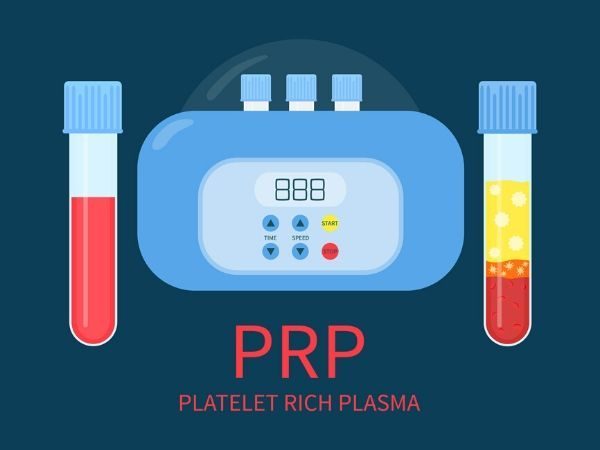Want to know more about joint injections? Check out our overview article or learn about HA and steroids.
What is Platelet Rich Plasma (PRP)?
Platelets contain a large number of growth factors and proteins that modulate inflammation, healing, and the immune system. We know that there is a component of osteoarthritis that involves increased activity of certain immune cells and increased production of IL-1 and TNF-alpha.
PRP therapy involves collecting the dog’s own blood and isolating the platelets using a commercially available syringe and centrifuge. Each commercial product has a different collection and processing method, but they can all be done in the hospital (do not need to send out to a lab).
The processing generally takes about 20 minutes.
Are there multiple PRP products I can choose for my dog?
There are currently 3 products available in the US that have research from clinical trials that show positive results in dogs with OA:
- Autologous Protein Solution (APS) (Pro-Stride, Zoetis)
- Autologous Conditioned Plasma (ACP, Arthrex)
- PALL V-Pet (Vet-Stem).
There are several other PRP products on the market that do not yet have clinical evidence to support their use in dogs with OA. There are no studies comparing the different products, and each product contains a different concentration of platelets, white blood cells, and red blood cells.
There is currently a debate within human and veterinary sports medicine as to the optimal concentration of platelets and WBC (leukocyte-poor vs. leukocyte-rich).
Until clear evidence supports one product over others, we recommend choosing one of the 3 products listed above that have clinical research in dogs.
Studies suggest that clinical effects are seen between 1-3 months after injection. Studies with the APS and V-Pet systems showed significant improvement in weight bearing as measured by force plate.
In fact, the degree of improvement was more than is expected with NSAIDs! Client-assessed outcomes, using the CBPI, also showed significant improvement. It is currently unknown how long the positive effects last, but repeat injections are likely needed every 6-12 months.

